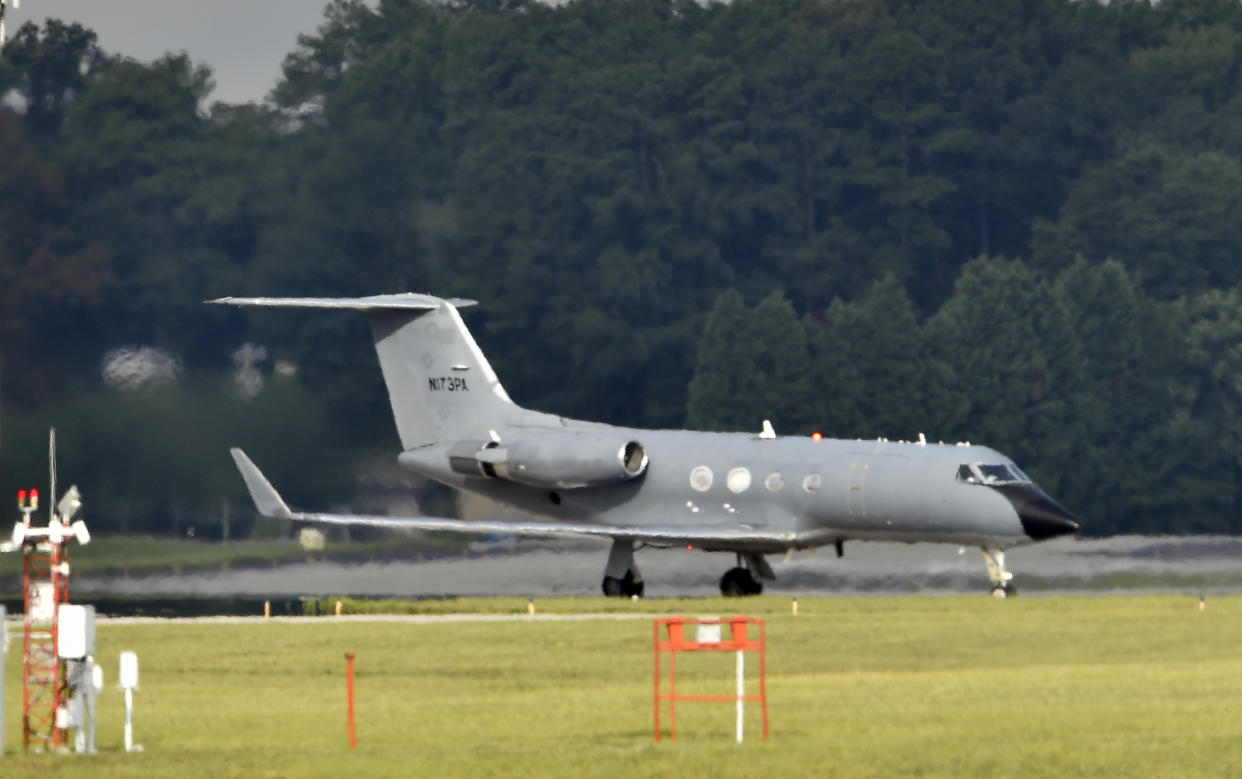Ebola evacuations to US greater than previously known
Transports have included patients exposed to virus, air ambulance operator says

An undisclosed number of people who’ve been exposed to the Ebola virus — not just the four patients publicly identified with diagnosed cases — have been evacuated to the U.S. by an air ambulance company contracted by the State Department.
“We moved a lot of other people who had an exposure event,” said Dent Thompson, vice president of Phoenix Air Group. “Many times these people are just fine, they just had an exposure. But you have to treat it as though the disease is present.”
How many exposed patients have been flown from West Africa to the U.S.? Thompson said medical privacy laws and his company’s contract with the State Department prevent him from revealing the figure.
“I’m not avoiding it,” Thompson told Yahoo News. “I’m just not allowed to talk about it.”
Five weeks ago, medical missionary Dr. Kent Brantly became the first Ebola patient to be treated in the U.S. He and fellow missionary Nancy Writebol were nursed back to health in a special isolation unit at Emory University Hospital in Atlanta and later released. Dr. Rick Sacra and an unidentified doctor who arrived on Tuesday are currently being treated in the U.S.
The State Department confirmed the four known Ebola patient transports but couldn’t provide details on any exposure evacuations to the United States. Phoenix Air, they said, is under contract because of its expertise.
An unnamed State Department official said “every precaution is taken to move the patient safely and securely, to provide critical care en route, and to maintain strict isolation upon arrival in the United States.”
Thompson said Phoenix Air has flown 10 Ebola-related missions in the past six weeks.
“Not everything we do is [related to] a sick person,” he said, adding that the company has also flown supplies. “We do basically whatever needs to be done.”
The Centers for Disease Control and Prevention, which is operating an around-the-clock Ebola emergency operations center, did not immediately respond to an email seeking information about the exposure patient transports.
On Monday, President Barack Obama, who has called the outbreak a U.S. national security priority, pledged more U.S. assistance to West Africa. The White House recently requested $30 million more from Congress to help the CDC’s efforts with the crisis.
With multiple government and aid organizations trying to tackle the unprecedented epidemic, Thompson predicts his team will be flying more precautionary patients back to the U.S.
“There will be a certain number of people who, through no fault of their own, will have an exposure event, and they are immediately identified and immediately extracted,” he said.
Phoenix Air’s modified Gulfstream III jets are “literally intensive care units with wings,” Thompson said. He said even evacuees without a confirmed Ebola diagnosis are placed in an isolation chamber for the 12- to 14-hour flight from West Africa to the U.S.
“You can never, ever let your safety guards down,” he said.
The Georgia-based air transport company got involved in the latest Ebola crisis when the Christian humanitarian group Samaritan’s Purse recruited it to evacuate Brantly and Writebol. The State Department was involved in the logistics, but the trips were funded by Samaritan’s Purse.
Since then, Thompson said, Phoenix Air has solely been under contract with the State Department.
“It became evident that we could no longer treat any of these flights as a private or commercial flight,” said Thompson, declining to divulge the specifics of the government contract.
Brantly, Writebol and the latest patient have been treated at Emory University in Atlanta. Last week, Sacra was flown to the Nebraska Medical Center in Omaha. Those hospitals, plus the National Institutes of Health in Bethesda, Maryland, and St. Patrick’s Hospital in Missoula, Montana, have specially-equipped biocontainment units built in collaboration with the CDC. However, the CDC has said any U.S. hospital following infection control recommendations and isolating a patient in a private room is capable of safely managing an infected patient.
Thompson declined to say where patients who have just been exposed to Ebola have been flown to in the U.S.
“They all go to a hospital and they monitor them,” he said. “If they do develop it, then they treat them. And, fingers crossed, they’re going to walk out the way Brantly and Nancy Writebol walked out.”
Follow Jason Sickles on Twitter (@jasonsickles).



